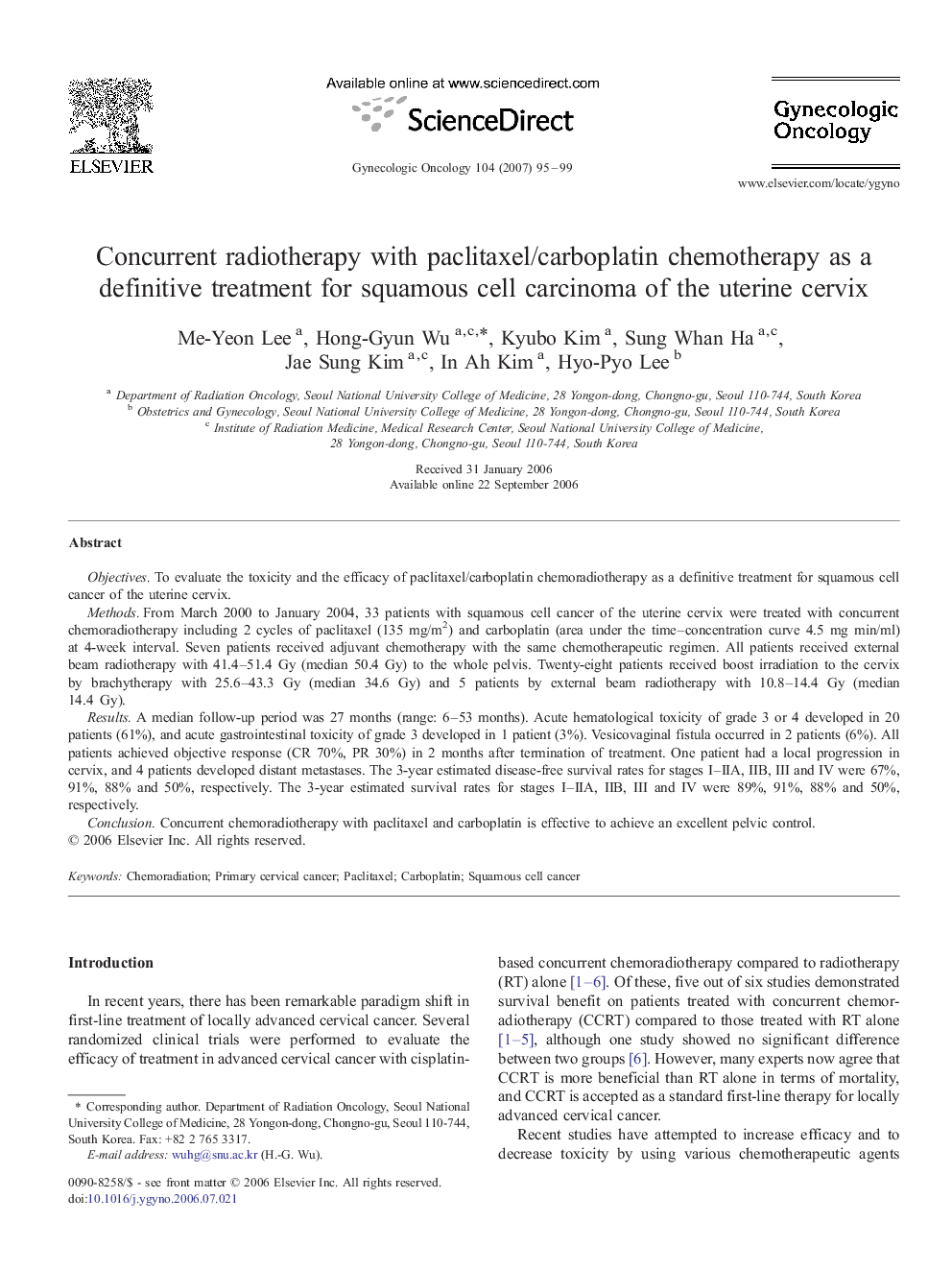| Article ID | Journal | Published Year | Pages | File Type |
|---|---|---|---|---|
| 3943588 | Gynecologic Oncology | 2007 | 5 Pages |
ObjectivesTo evaluate the toxicity and the efficacy of paclitaxel/carboplatin chemoradiotherapy as a definitive treatment for squamous cell cancer of the uterine cervix.MethodsFrom March 2000 to January 2004, 33 patients with squamous cell cancer of the uterine cervix were treated with concurrent chemoradiotherapy including 2 cycles of paclitaxel (135 mg/m2) and carboplatin (area under the time–concentration curve 4.5 mg min/ml) at 4-week interval. Seven patients received adjuvant chemotherapy with the same chemotherapeutic regimen. All patients received external beam radiotherapy with 41.4–51.4 Gy (median 50.4 Gy) to the whole pelvis. Twenty-eight patients received boost irradiation to the cervix by brachytherapy with 25.6–43.3 Gy (median 34.6 Gy) and 5 patients by external beam radiotherapy with 10.8–14.4 Gy (median 14.4 Gy).ResultsA median follow-up period was 27 months (range: 6–53 months). Acute hematological toxicity of grade 3 or 4 developed in 20 patients (61%), and acute gastrointestinal toxicity of grade 3 developed in 1 patient (3%). Vesicovaginal fistula occurred in 2 patients (6%). All patients achieved objective response (CR 70%, PR 30%) in 2 months after termination of treatment. One patient had a local progression in cervix, and 4 patients developed distant metastases. The 3-year estimated disease-free survival rates for stages I–IIA, IIB, III and IV were 67%, 91%, 88% and 50%, respectively. The 3-year estimated survival rates for stages I–IIA, IIB, III and IV were 89%, 91%, 88% and 50%, respectively.ConclusionConcurrent chemoradiotherapy with paclitaxel and carboplatin is effective to achieve an excellent pelvic control.
